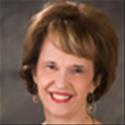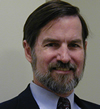Name: H. Rutherford (Rud) Turnbull, III

Member since: 2007
Work: Distinguished Professor and Co-founder and Co-director, Beach Center on Disability, The University of Kansas
Why AAIDD: I was mentored into it by leaders in the field of intellectual disability and was impressed in 1975 by the commitment of such leaders as Burton Blatt to reforming the lot of persons with intellectual disabilities and doing so by reforming the profession that served them, including in particular AAIDD (then, AAMD).
Why Intellectual Disability: My son, Jay Turnbull (1967-2009), had an intellectual disability, and my wife, Ann Turnbull, was a specialist in intellectual disability.
AAIDD Leadership: chair, Legal and Social Issues Committee; author, two monographs (Consent Handbook in 1978 and Least Restrictive Environment in 1980); Secretary, Vice President, President Elect, and President (I985-6, the first of three lawyers to serve in that role).
Name: Susan B. Palmer, Ph.D. Lawrence, KS
Member since: 1995
Work: I am a Research Associate Professor at the Beach Center and Kansas University Center on Developmental Disabilities at the University of Kansas. Our research is related to inclusive services, access to the general curriculum, and supports through self-determination for students with both intellectual and other related disabilities. The work is usually school-based, but sometimes extends throughout the life-span, as well.
Why AAIDD: I became a member of AAIDD in 1995 while living in Texas and working at The Arc of the United States, then located in Arlington, Texas. That’s when I joined Michael Wehmeyer’s research team, and Michael mentored many of his employees to be actively engaged in activities within this association. It has been exciting to watch the organization grow, change, and develop into the strong unit that it is now. Once you become involved in leadership in AAIDD, you are more likely to continue to stay involved while obtaining many benefits of membership. I hope to continue to support the organization by encouraging students and colleagues to join AAIDD.
Why Intellectual Disability: As a child, I was frequently in contact with family friends who had an adult daughter with Down syndrome. As a young mother, we lived beside a family that had twins, one of whom had Down syndrome. Working in early intervention sparked my interest in interacting with individuals and families of individuals with intellectual disabilities, and I continued on to work on research to support and encourage self-determination and a desired quality of life for all.
AAIDD Leadership: Kansas Chapter President, Member – Education Division Workgroup, Member – 2010 Annual Conference Planning Committee, AAIDD Fellow.
Name: Ann Turnbull
 Member since: 1973
Member since: 1973
Work: I work at the University of Kansas with a joint appointment in the Department of Special Education and in the Schiefelbusch Lifespan Institute
Why AAIDD: In the early stages of my career (37 years ago), I attended my first AAIDD meeting and was mesmerized that a whole world of professionals working in the ID field were gathered together. Until that point, I only knew people in my immediate geographical area. Since then, AAIDD has provided me with enumerable opportunities for learning, networking, envisioning, and advocating.
Why Intellectual Disability: I majored in what was then called mental retardation as an undergraduate student in the mid-60's. I had several internship experiences with children who experienced intellectual disability, and it was clear to me that this was the area in which I wanted to have a career focus.
AAIDD Leadership: AAIDD Past President
Name: Amy Hewitt, Institute on Community Integration University of Minnesota

Member since: 1995
Work: University of Minnesota, Institute on Community Integration (UCEDD), Research and Training Center on Community Living (NIDRR funded RRTC) and MN LEND. Senior Research Associate and Director of Training
Why AAIDD: I am focused on finding and creating useful information and resources in my job. I find AAIDD to be the place of leading information and research in the field of services and supports to people with intellectual and developmental disabilities in the United States and internationally. It is also a place where I can find, network with and evolve lasting professional and personal relationships with people who understand the things for which I have great passion.
Why Intellectual Disability: Fighting for the rights and human dignity of people with intellectual disabilities is a social justice cause for me. As a self-described radical social worker I feel this civil rights movement is of utmost importance in our society because it is not one that gets much attention nor is it understood by most people. Anything my work contributes to better understanding these issues and creating change is a huge life bonus in my mind.
AAIDD Leadership: Past state chapter president, social work division chair, Board member; current guest reviewer IDD journal.
Name: Luchara Wallae, Kalamazoo, MI
Member Since: 2006
Work: Assistant Professor of Special Education at Western Michigan University
Why AAIDD: I first joined AAIDD at the encouragement of my advisors while still in graduate school. I continue my involvement because of all of the wonderful people with whom I come in contact.
Why Intellectual Disabilities: As a certified special education teacher in learning disabilities and emotional/behavioural disorders, I wanted to be able to meet needs of students with even more diverse and significant needs. Plus, working with individuals with intellectual disabilities is really, really fun!
AAIDD Leadership: AAIDD Employment and Transition to Adulthood Task Force co-chair, Student and Early Career Professionals committee (member), and SECP Guide Program co-chair.
Name: Shelley L. Watson, PhD, Ontario, Canada

Member since: 2002
Work: Laurentian University Psychology department, Sudbury, Ontario, Canada
Why AAIDD: publication of rigorous academic journals; great networking opportunities for students
Why Intellectual Disability: I took a course in my undergraduate program on sexuality and disability. I was really interested in the rights issues, so started working at a local agency supporting individuals with I/DD. This opportunity led to my Master's and PhD work and where I am today!
AAIDD Leadership: Co-editor, AAIDD Early Career Professional webpage; member of the AAIDD Diagnosis Task force; member of the AAIDD Student and Early Career Professionals committee
Name:Bill Gaventa, MDiv, New Brunswick, NJ
Member since: 1973
Work: Director, Community and Congregational Supports, The Elizabeth M. Boggs Center on Developmental Disabilities, and Associate Professor, Department of Pediatrics, Robert Wood Johnson Medical Center
Why AAIDD: I joined the AAMD (then) in 1973 when I was a trainee at the Center for Disorders of Development and Learning, the University Affiliated Facility (then) in Chapel Hill, North Carolina, because all my teachers and mentors said it was the organization to join. I also joined because of its network of people interested in religious services with people with developmental disabilities, one of the few networks in the country at that point. That interfaith division and network, combined with the inter-disciplinary character of the AAIDD, has been my professional home for more than 30 years. It has provided me an opportunity to meet and learn from others who were known by their writing or leadership, a place to build relationships and connections, and a place to test out and share my own thinking and ideas. I cannot image my professional career without these years of connection and learning.
Why Intellectual Disability: The field chose me. More seriously, I was assigned as a chaplaincy intern at Memorial Hospital in Chapel Hill to do part of my work at the DDDL (above) because of my interest in pediatrics and one year of experience working with children with emotional disturbances of various kinds. My first response was "I can't do that. Send someone else." But I was sent, and out of trying to figure out what my pastoral role was, first, with the individuals and families who came to the DDDL for 2 or 3 interdisciplinary evaluations, and second, within an interdisciplinary team, I found my professional call and place in ministry and service. I found it listening to the too frequent horror stories about the absence of spiritual supports or the unhelpful things said or done, and by hearing about the ways that some families found their faith community to be the foundation of their support. My supervisors at the DDDL and Memorial Hospital supported my initial visions for actions, and that part time student assignment turned into a role as "Chaplaincy Section Head" (a section of one) in an office no bigger than a closet, and just enough money to support our graduate student lives. What I have learned, and keep on learning, about myself, life, helping, ministry, and father from individuals with developmental disabilities and their families is what "chose" me and what has sustained me in this field since the 70's. I can't imagine doing or having done anything else.
AAIDD Leadership: I became the President of the Religion Division in 1984, which then led to positions on the AAMD Council, and then later to roles with the Georgia State Chapter. After my role as President of the Division, the Division moved to develop its own structure to maintain a small leadership team. I have served as volunteer "Executive Secretary" since then, with the primary roles of newsletter editor and resource collector. I have also served two terms as a Member-at-Large on the AAIDD Board of Directors, and served on several national conference planning committees.